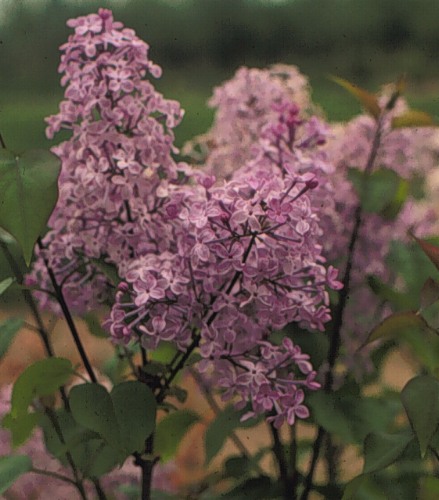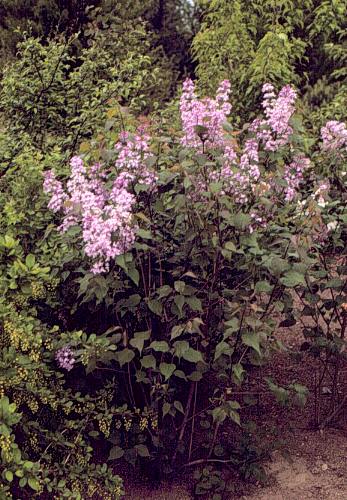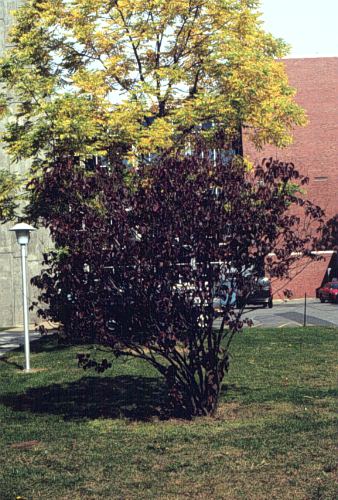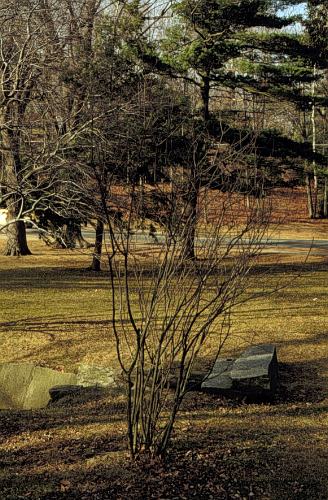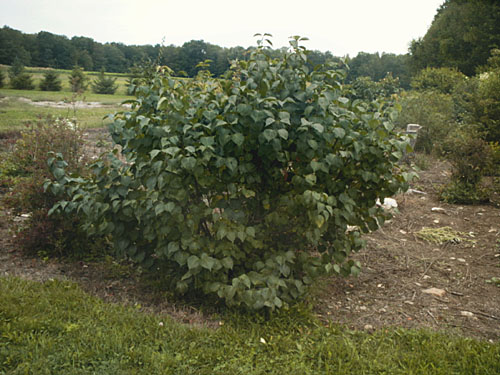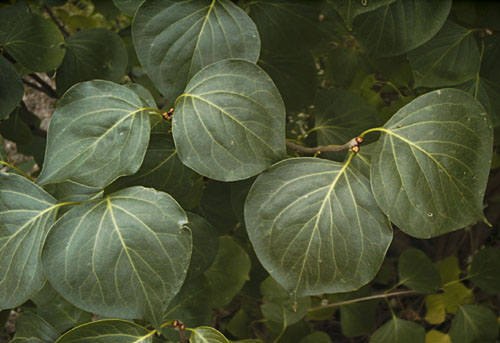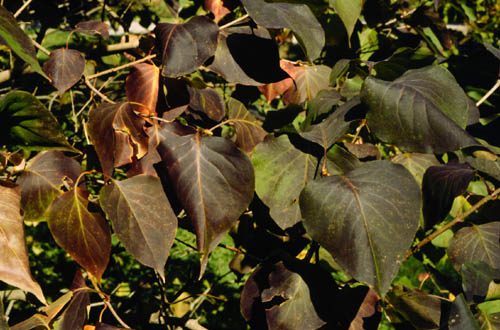Syringa oblata
Early Lilac
Oleaceae
ExpandHabitat
- native to northern China
- hardy to zone 3
Habit and Form
- a deciduous shrub or tree
- 10' to 12' tall
- rounded form
- coarse texture
- moderate growth rate
Summer Foliage
- opposite leaf arrangement
- simple, deciduous leaves
- orbicular leaf shape
- 2" to 4" long
- leaf margins entire
- dark, bluish-green leaf color
Autumn Foliage
- reddish-purple fall color
Flowers
- pale, lilac flowers
- borne in loose terminal panicles
- 2" to 5" long
- blooms in May
Fruit
- a small capsule
- held in panicles
- not ornamentally important
Bark
- stems are gray-brown
- not ornamentally important
Culture
- easy to grow
- adaptable
- full sun to light shade
Landscape Use
- for bloom
- for fragrance
- useful because of its small size
- foundation plant
- shrub border
- groupings and mass plantings
- specimen
Liabilities
- not many liabilities with this species
- flower buds emerge early and can get hit by a late frost
ID Features
- orbicular leaves in an opposite arrangement
- one of the few lilacs with good fall foliage color
- rounded large shrub or tree
- numerous, fragrant, pale, lilac flowers
Propagation
- by cuttings, but difficult
- by seed
Cultivars/Varieties
var. dilatata - This is the more common form of the straight species, featuring a shrubby habit, longer flowers, excellent fall color and wide climatic adaptibility from Maine to North Carolina.
'Wan Hua-zi' - Notable for its later blooming period, this selection presents its single, purple-pink blooms up to two weeks later than the species. As with var. dilatata, its tolerance of varying environmental conditions is excellent.
Syringa oblata has been crossed with S. vulgaris to produce S. x hyacinthiflora, the "Early Flowering Lilac". Many selections have been made of this hybrid species, all of which flower before the S. vulgaris cultivars and generally form large shrubs to 12' tall and wide. The selections are all very hardy, to USDA zone 2-3. They include:
'Asessippi' - This plant blooms very early in the lilac season with single, pale lavender flowers. The blooms are profuse and fragrant, borne on a large 12' tall and wide shrub.
'Blanche Sweet' - The early blooms of this plant are unusually colored, with blue buds opening to single florets composed of white-blue petals with a pink cast. The flowers are fragrant and displayed on a 10' tall and wide shrub.
'Esther Staley' - This large grower offers early panicles of large, single pink blooms that emerge from reddish buds.
'Excel' - An adaptable plant, this selection is very cold hardy, but also tolerant of warmer climes than most lilacs. The light pink-lilac flowers appear early and are abundant on this upright plant (12' tall and 10' wide).
'Maiden's Blush' - A more dwarf selection, this plant generally only grows to 6' tall and wide. It produces prodigious quantities of light pink flowers from an early age.
'Mount Baker' - This large shrub (to 12' tall and wide) presents panicles of single white flowers very early in the season. The large size and extreme hardiness of this plant make it suitable for use as a hedge in cold areas of New England.
'Pocahontas' - Very common in the industry, this selection out of Canada is extremely cold hardy and offers a dependable show of profuse panicles of deep violet florets. It helps herald the lilac season, blooming much earlier than the common S. vulgaris-types.
